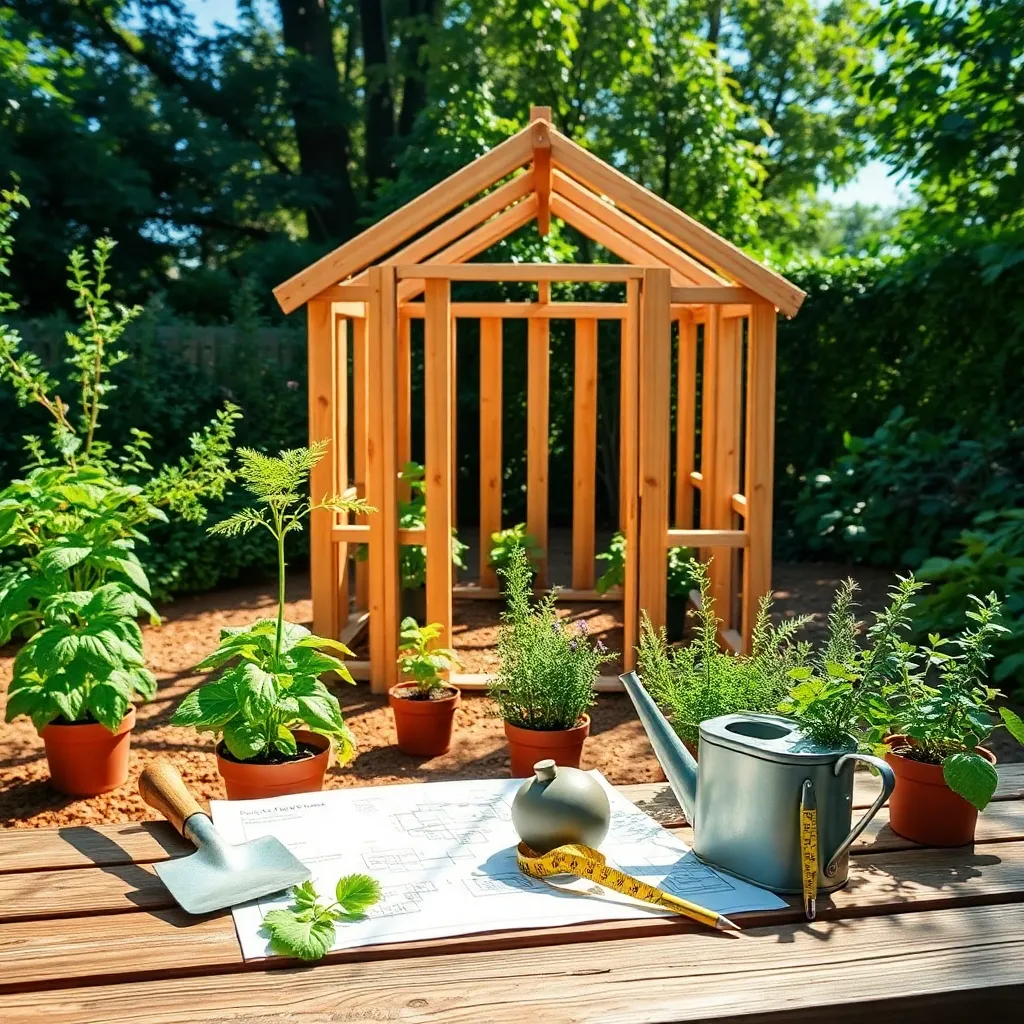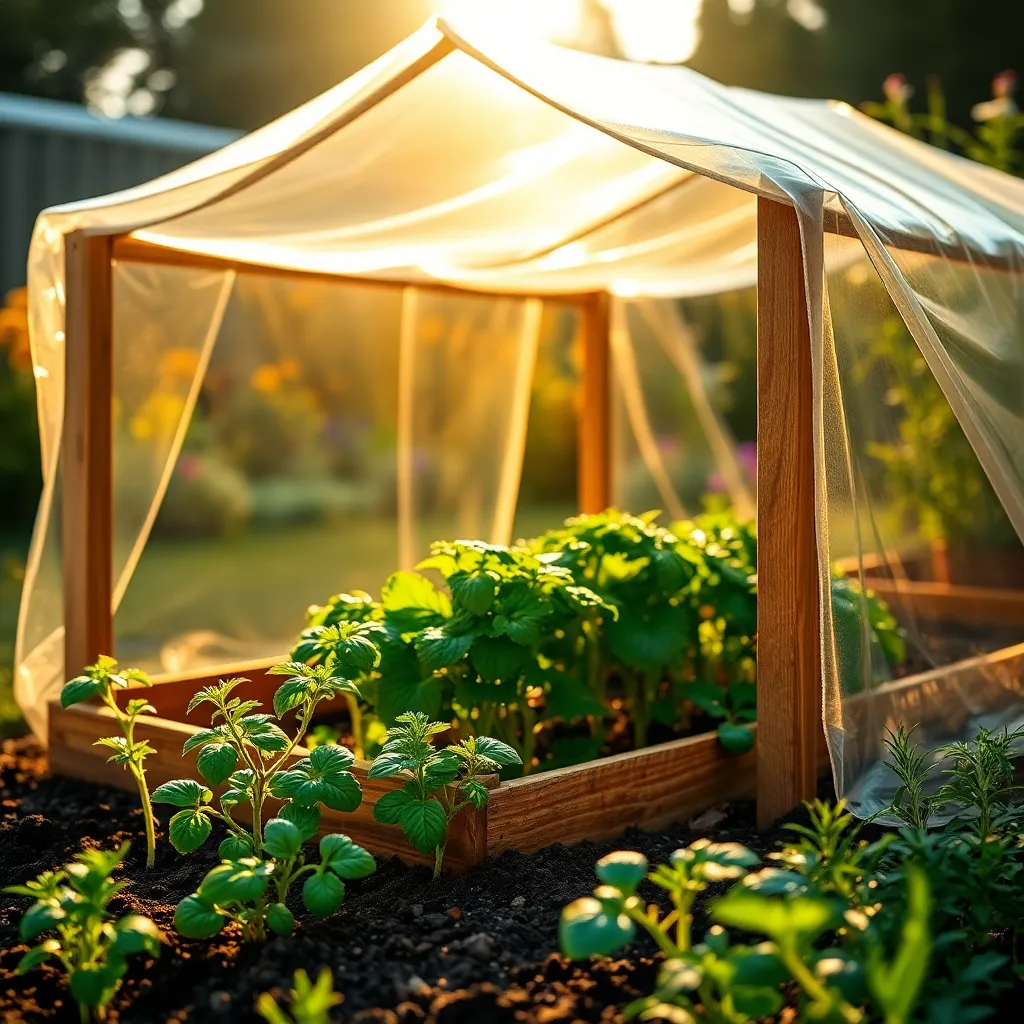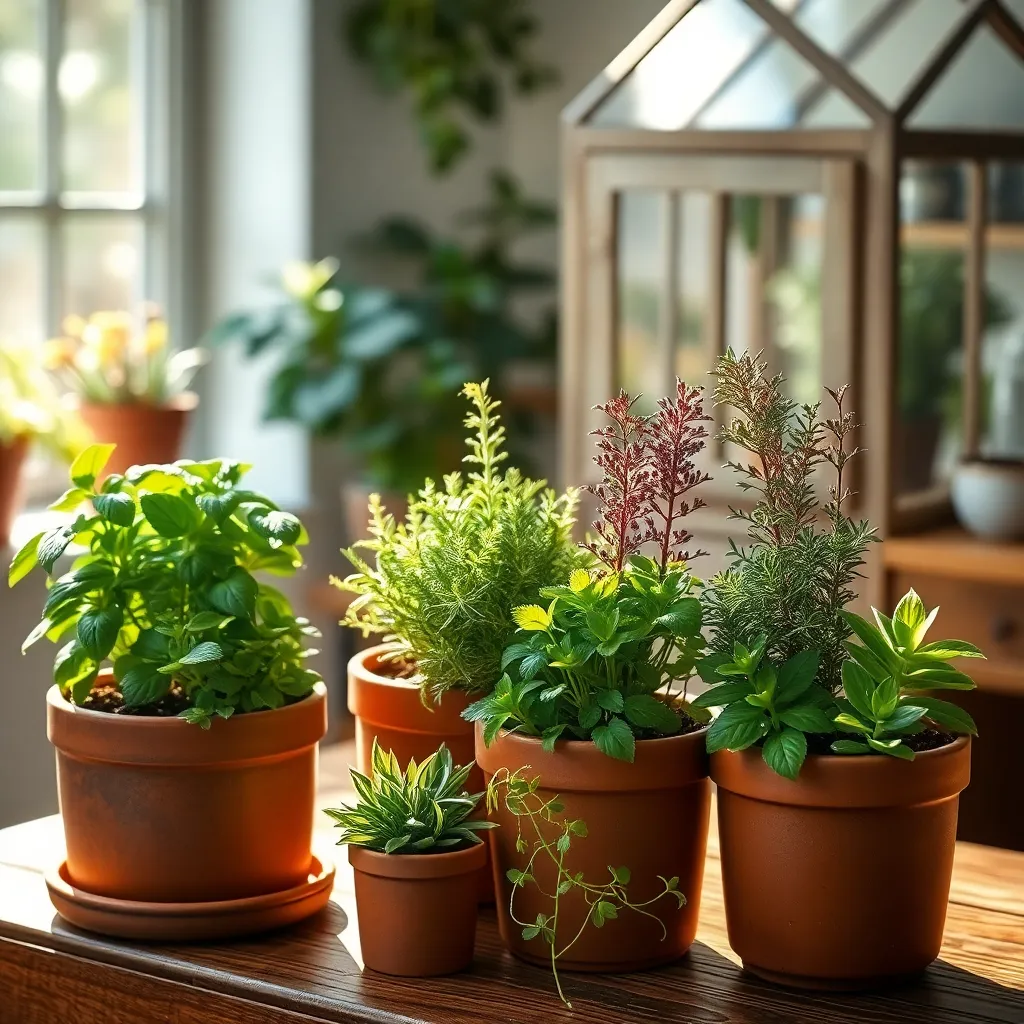Imagine stepping into your garden and being enveloped by the fresh, invigorating aroma of homegrown herbs, no matter the season. Whether you’re a seasoned horticulturist or just dipping your toes into the fertile world of gardening, creating a mini greenhouse for herbs can be a game-changer in how you cultivate your leafy companions. This delightful endeavor not only extends your growing season but also transforms your gardening space into a lush, thriving oasis that defies weather limitations.
A mini greenhouse is an ideal project for gardeners looking to maximize space and enhance the health of their herbs. In this guide, you’ll uncover detailed, step-by-step instructions to build your very own mini sanctuary, complete with tips on selecting the best materials, optimizing sunlight exposure, and maintaining the perfect microclimate. Get ready to delve into a rewarding project that promises to enrich your gardening journey, whether you’re nurturing basil, mint, or something more exotic.
Moreover, you’ll learn about the benefits of growing herbs in a controlled environment, from pest reduction to improved growth rates. This mini greenhouse project is not just about constructing a structure—it’s about fostering a deeper connection with your garden and gaining the confidence to experiment and enjoy the fruits of your labor. Embark on this mini greenhouse adventure, and watch as your herbs flourish under your dedicated care.
Select a Suitable Location

Choosing the right location for your mini greenhouse is crucial for healthy herb growth. Ensure the site receives ample sunlight, ideally 6-8 hours of direct sunlight each day, as most herbs thrive in full sun.
Consider the prevailing wind direction when selecting your spot. A sheltered area can protect your greenhouse from strong winds, which can help maintain a stable temperature and humidity level inside.
For optimal plant health, make sure the area has good drainage. Avoid low-lying spots that collect water, as excessive moisture can lead to root rot in your herbs.
For beginner gardeners, placing the greenhouse near a water source can simplify watering routines. Advanced gardeners might consider installing a simple drip irrigation system to automate and optimize watering frequency for their herbs.
Gather Necessary Materials

To begin building your mini greenhouse for herbs, gather all necessary materials before you start. Having everything on hand will make the process smooth and efficient, allowing you to focus on constructing rather than searching for tools.
First, you’ll need a clear plastic or glass cover to trap warmth and light, essential for healthy herb growth. Choose materials like old windows or clear plastic sheeting, which are both cost-effective and provide excellent insulation.
A sturdy frame is crucial for supporting your greenhouse structure, and you can use either wood or PVC pipes. Wood provides a classic look and is easy to work with, while PVC is lightweight and resistant to moisture.
For the base, select a durable, weather-resistant material such as treated wood or metal. This base will provide stability and ensure that your greenhouse withstands various weather conditions.
Additionally, gather basic tools like a saw, screws, and a drill to construct your greenhouse. Having the right tools not only speeds up the process but also ensures safety and precision in your build.
Finally, ensure you have potting soil, herb seeds or seedlings, and containers ready for planting once your greenhouse is complete. A rich potting mix with good drainage is essential for healthy herb growth, and containers with drainage holes will help prevent overwatering.
Construct the Greenhouse Frame

Now that you have your materials ready, it’s time to start constructing the greenhouse frame. Begin by selecting a flat, level area in your garden where the mini greenhouse will be placed, ensuring it receives ample sunlight throughout the day.
Use sturdy materials such as PVC pipes or wooden planks to build the frame, as these will provide the necessary support for your greenhouse. Cut the materials to the desired size, keeping in mind the height and width that will accommodate your herbs comfortably.
Assemble the base of the frame first, connecting the pieces securely using screws or pipe connectors, depending on your chosen material. Make sure the base is stable and square, as this will provide a solid foundation for the rest of the structure.
Once the base is complete, move on to the vertical supports, which will determine the height of your greenhouse. Attach these supports at each corner and in the middle of each side for added stability, ensuring they are plumb and evenly spaced.
Complete the frame by adding a sloped roof, which will allow rainwater to run off easily. Cut and attach crossbars between the vertical supports, creating a triangular peak at the top to support the covering material securely.
Finally, double-check all connections, ensuring they are tight and secure to withstand weather conditions. With the frame set, you’re one step closer to an ideal environment for growing your favorite herbs year-round.
Install Clear Covering Material

Once your greenhouse frame is constructed, it’s time to cover it with a clear material that will let light in while maintaining warmth. Clear polyethylene plastic is an excellent choice due to its affordability and ease of installation; it effectively traps heat and protects against wind and rain.
Begin by measuring the dimensions of your frame to cut the plastic sheet accurately. It’s important to leave an extra inch or two on each side for proper attachment, ensuring a snug fit without straining the material.
Secure the plastic to the frame using staples or nails if the frame is wooden, or zip ties if it’s metal. Make sure to pull the plastic taut to prevent sagging, which can cause water to pool and potentially damage your herbs.
Consider adding a layer of bubble wrap on the inside during cooler months to enhance insulation. This simple technique can help maintain a more stable temperature, ensuring your herbs thrive even in chillier weather.
Arrange Herb Containers Inside

Once your clear covering is installed, it’s time to arrange your herb containers inside the mini greenhouse. Begin by choosing containers that have drainage holes to prevent waterlogging, which is crucial for healthy herb growth.
Place larger containers at the back and smaller ones at the front to ensure all plants receive adequate sunlight. Light exposure is essential for herbs like basil and rosemary, which thrive in full sun conditions.
Consider grouping herbs with similar water needs together to streamline your care routine. For instance, thyme and oregano prefer drier conditions, so they can be placed together and watered less frequently.
Use a high-quality potting mix that retains moisture but also provides good drainage. A mix with added perlite or sand is ideal for most herbs, offering balance between water retention and drainage.
For gardeners looking to optimize space, vertical stacking or tiered shelves can be a great option. This setup maximizes your growing area, allowing you to cultivate a wider variety of herbs within a limited space.
Conclusion: Growing Success with These Plants
Building a mini greenhouse for herbs isn’t just a garden project; it’s a nurturing journey that mirrors the essential aspects of a flourishing relationship. In this article, we’ve explored the five key concepts: understanding the importance of a strong foundation, creating a nurturing environment, maintaining consistent care, allowing for growth, and embracing adaptability. Just as these elements are crucial in constructing a greenhouse, they are equally vital in cultivating healthy relationships.
As an immediate next step, take a moment to reflect on how you can apply these concepts to your own relationships. Whether it’s initiating an open conversation or planning a shared activity, small actions can foster significant growth.
Remember, relationships thrive on continuous learning and adaptation. Bookmark this article to revisit these insights and strategies as you nurture your bonds. By doing so, you’re investing in a future where your relationships are as vibrant and resilient as your herb garden.
With commitment and care, your relationships can flourish beautifully. Embrace this journey with confidence, knowing that each step you take brings you closer to lasting relationship success. Save this article to ensure you have this valuable guide at your fingertips whenever you need it.

